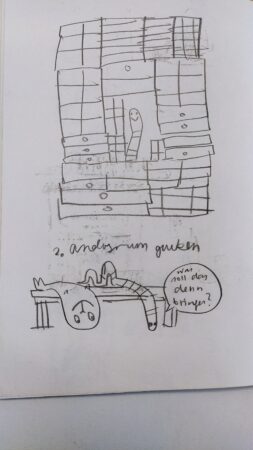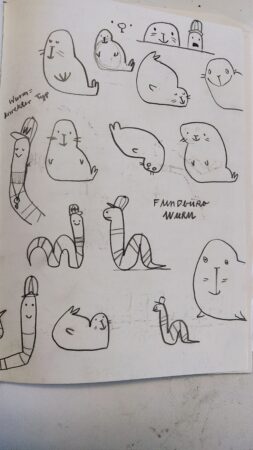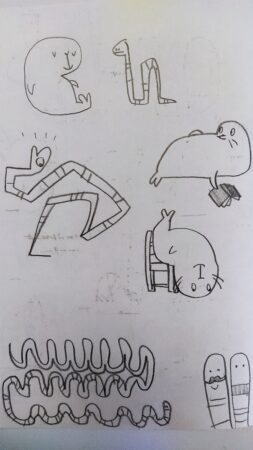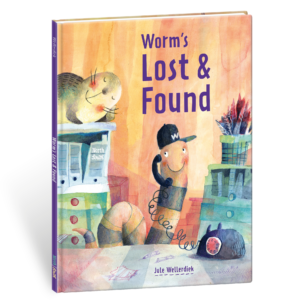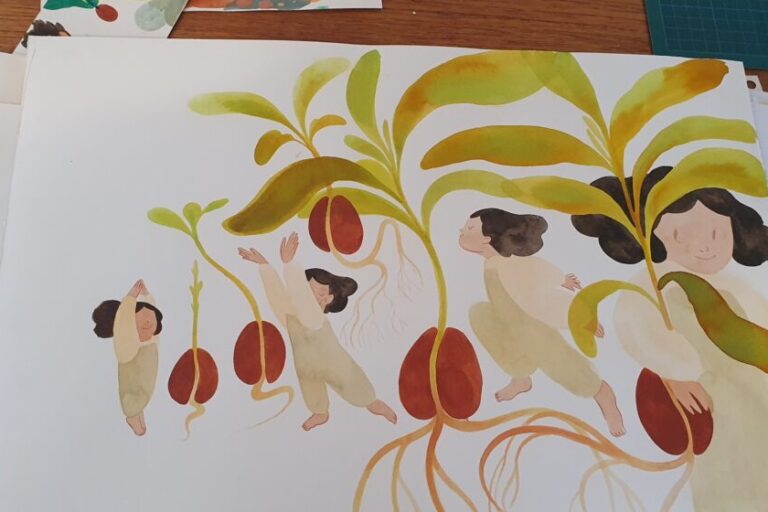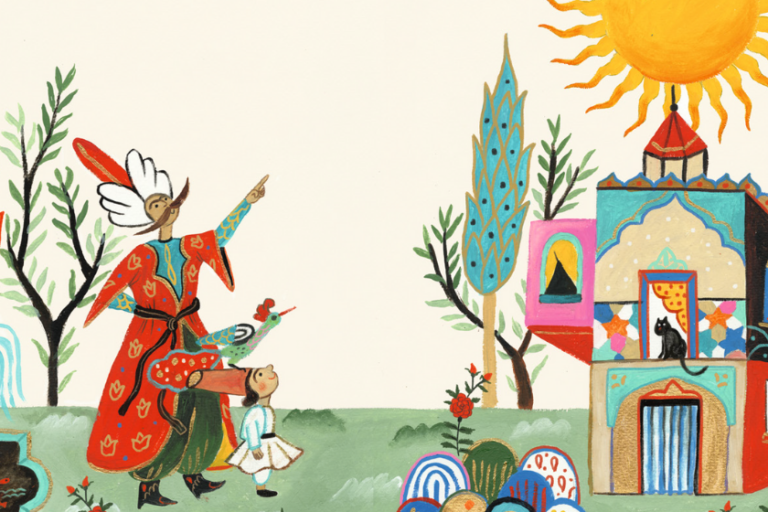Finding Worm’s Story
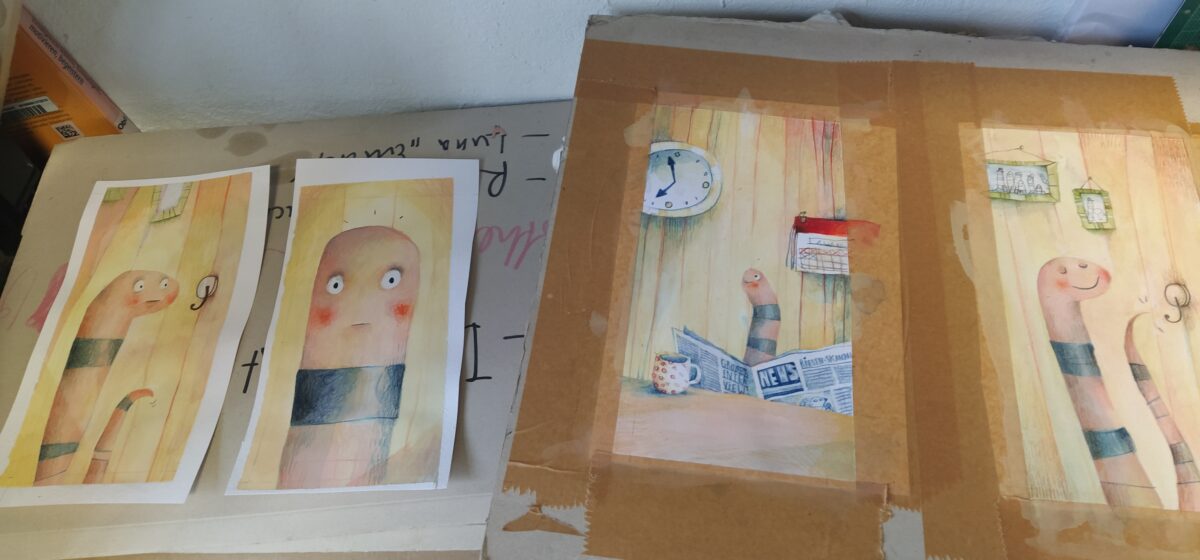
Jule Wellerdiek admits that she often loses things. But she found a wonderful story in her playful picture book about a worm who can find everything except his own hat! In this interview with Jule, she discusses her debut picture book with NorthSouth, Worm’s Lost & Found, and her process of writing and illustrating the story. The interview is translated from German by David Henry Wilson.
Do you often lose things?
The short answer is yes! Very often! Especially my cell phone and my headphones, which I manage to leave in the most ridiculous places–on a bookshelf, down the back of my friends’ sofas, in a bush by the roadside, at the movies, or in changing rooms. But I come from a family that has a great tradition of losing things and of endless searching. My favorite story is about my sister, who once managed to lose her cell phone in a supermarket freezer. It was several days before somebody found it.
How did you get the idea for the book?
Probably for that same reason: looking for lost items plays such a large part in my own life! And because over the years I’ve learnt that it doesn’t do you any good to get all worked up about it. Much better to keep a cool head and, to echo the words of the seal, “simply wait.” Most things will eventually turn up when you’re actually not looking for them. There’s even a word for that: “serendipity.”
[L]ooking for lost items plays such a large part in my own life!
Jule Wellerdiek
What made you think of a worm as your main character?
Right from the start, I liked the idea of the worm as a dynamic character with a flexible shape. Perfect for someone who is prone to switch in an instant from a contented smile to an angry frown. I also get a lot of pleasure from humanizing animals or fantasy characters, and bringing them to life even if they don’t actually have anything in common with us. It’s really fun to do that.
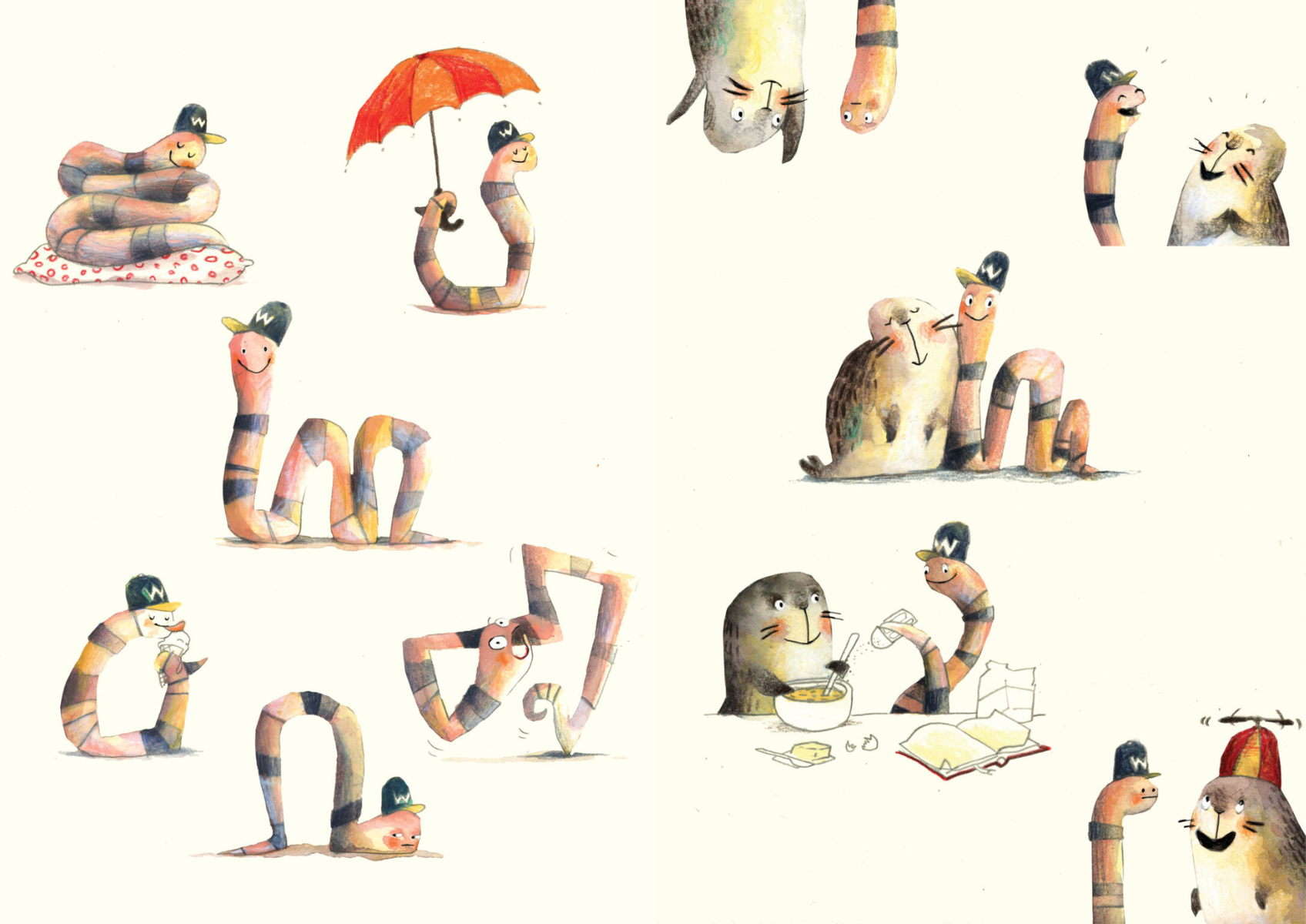
So how did that lead to the pretty unusual duo of Seal and Worm?
The seal is a much cooler, calmer character than the worm. And somehow that’s exactly the impression I get from seals in general: they simply look as if they’re comfortable and at peace with themselves. It’s what I like about seals in the real world, and so the seal is perfectly suited to the role I want her to play.
In the storyboard you had different versions as regards the amount of text. Which variation was decided on, and why?
In my first version, there was a lot more text. That’s often the case, because I write the text before I do the pictures, but then I can delete a lot of the sentences because the pictures give the information anyway. The thought even occurred to me that I could tell the story without any words at all, but in the end the best solution turned out to be a mixture of the two–which I’m very happy with.
How did Worm and Seal develop from your first idea to the characters as they are in the finished story?
It often happens that I actually get to know the characters first, and then start to think about the story I can weave around them. I imagined that Worm and Seal had already embarked together on other adventures before I eventually hit on the idea of Worm’s Lost & Found.
Which of the illustrations is your favorite, and why?
It keeps changing (which I think is a good sign). At the moment, I love those in which Worm and Seal bake a pancake together. This was a great opportunity to bring out the personalities of the two characters and at the same time to show the changes in Worm’s mood.
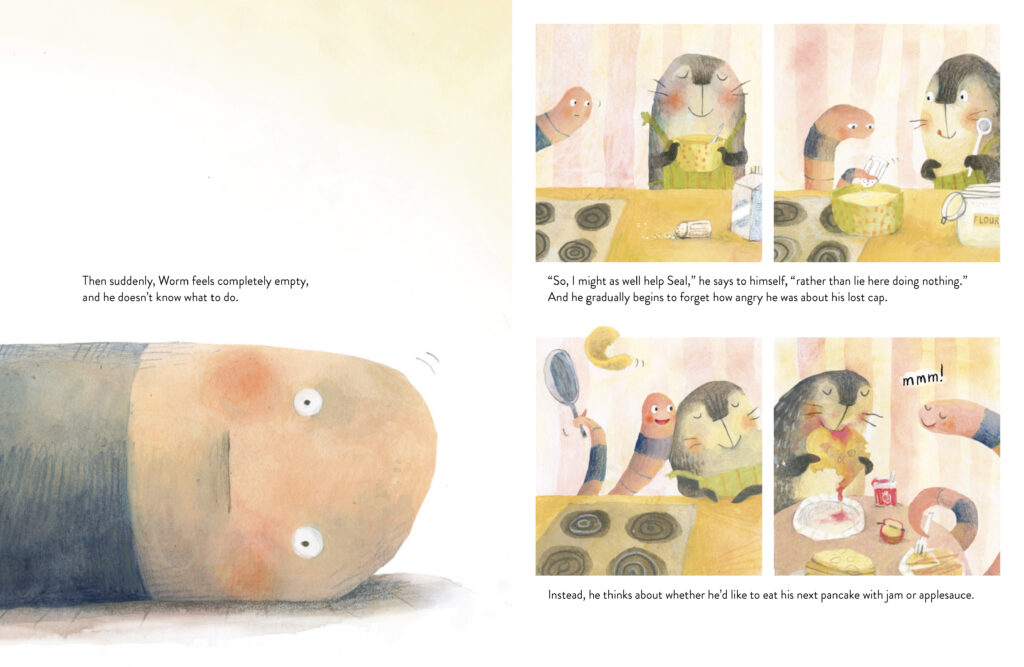
What is your favorite memory from the whole creative process?
Doing the illustrations is always the best, simply because that’s what I love most. There were many days when I spent more time in the company of Worm and Seal than I did with real people. During that time, I became more and more fond of them. And when you scroll through the PDF layout for the first time and you really like it – that gives you a lovely feeling.
Lastly, do you have a tip to give to people who have lost something?
Seal’s three tips are best: “take a good look around . . . look from the other way up . . . simply wait.” I can only offer one tip which helps me not to lose things in the first place. For every single item, choose one fixed place where you will always put it and keep it. That’s how you will always find it. Sounds obvious, but it’s extremely helpful if you keep losing things even in your own home.
Thanks for the tip and for talking to us!
